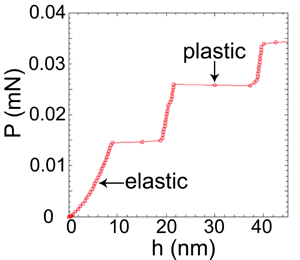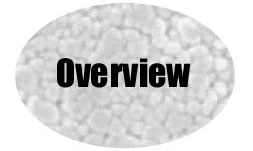

Nanostructured materials and surface coatings offer the potential for
engineering a wide variety of components and structures of technological
importance to the US Navy, with mechancial and functional properties
as well as damage tolerance and fatigue resistance, which cannot be
realized in conventional microstructures. Through appropriate processing methods,
factors such as the atomic structure and the thickness, volume fraction, chemical
composition and size of crystallites and intercrystalline boundaries, a wide
variety of nanostructures and interfacial materials in bulk and coatings form could
be synthesized for optimizing mechanical performance.
A five-year, multidisciplinary research initiative on "Mechanical Responses of
Nanostructures and Interfacial Materials" is oulined,
with the specific objective of developing a robust scientific and technological
framework for the design and life-assessment of nanostructured bulk and
coating materials.
The proposed effort is organized into three interconnected workunits:
.........(1) Processing of nanostructured coatings and bulk compacts;
.........(2) Experimental studies of structure evolution, mechanical deformation, fracture
and fatigue; and
.........(3) Multi-scale modeling and life-prediction.
The following figure illustrates schematically the classification of mechanical characteristics
which arise from grain size dependence. Region I includes the well-known Hall-Petch effect of grain
size, whereby decreased grain size results in increased yield strength. Region II, spanning grain
sizes from ~1 micron down to ~20 nm, includes phenomena such as localization of shear, decreased
strength and increased ductility. Region III, encompassing grain sizes < 20 nm, exhibits a reverse
Hall-Petch effect where strength actually increases in proportion to grain size, and deformation is
dominated by grain boundary activity. Finally, Region IV includes amorphous metals which exhibit
zero strain-hardening and are essentially brittle solids.
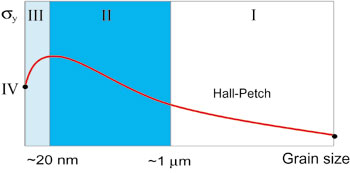
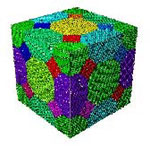
|
MOLECULAR DYNAMICS: MD simulation of 3D grain growth and deformation in both fully dense and porous polycrystalline microstructures is now possible due to recent advances in computational power. | ||
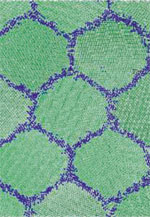
|
MESOSCALE SIMULATIONS: Modeling at the dislocation level has provided justification for the Hall-Petch effect of grain size on yield strength. As grain size decreases, these models show that some materials may actually soften due to competition between grain boundary sliding and dislocation processes. | ||
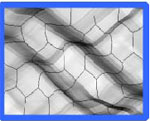
|
CONTINUUM CRYSTAL PLASTICITY: CP models assign slip geometries to individual regions ("grains"), but is otherwise a continuum model of deformation. CP can capture microstructural deformation characteristics such as texture development, but CP has not yet been developed for nano- grained materials where grain boundary regions must be incorporated into the model. Here, it is clear that plastic flow promotes shear banding in an FEM polycrystal. |
